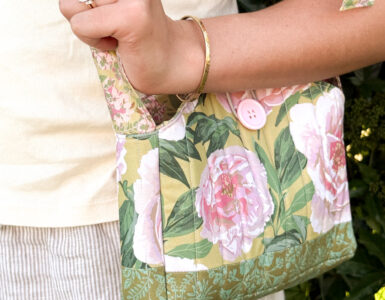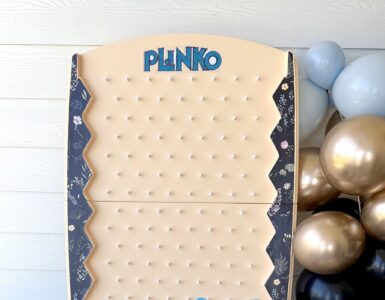If you’ve got wood furniture repair on the brain, your first instinct might be to paint. But before you do, there are some ways to fix it up and embrace the natural finish.
Gretchen Edwards shares some products that will bring the original luster back to your furniture pieces.
Vintage Furniture Repair: Renewing Natural Wood Finishes
When it comes to fixing up that piece of hand-me-down furniture, put down the paintbrush. With today’s styles, often you might be better off to embrace and restore that natural wood finish.
Studio 5 guest, Gretchen Edwards, rescues vintage furniture, and has some solutions for recovering the luster, and embracing the patina of your best old wood furniture.
Scratches
A scratch is the removal of top coat and stain on the wood. The way to fix this is to use a scratch remover. It’s not aggressive. What it does is hydrate the wood. It will need to be re-touched every three months or so.
Old English Scratch Cover (choose for light or dark wood), $5-10
Wood color markers or crayons are an option. It is however, a little more difficult to match the color and sometimes looks like you used a marker on your furniture. Try it in an area that doesn’t show first.
Gouges, Dings, & Dents
Gouges and dents can’t just be covered with scratch removers. They need to be filled with wood filler, sanded, stained, and sealed. Use a color matched wood filler because you may be able to skip the staining step.
Minwax Color Matched Wood Filler, $7
Use a spatula and wood filler to fill the gouge. Let it dry. Sometimes it shrinks when it dries so you may have to fill again and let dry. Sand it smooth. Seal it with a polyurethane or furniture wax.
If the filler is not the exact color you will have to stain it to match the wood. Use a small disposable paint brush to apply the stain. Let it dry and then seal with a polyurethane or furniture wax.
Note: If using wood stain make sure to not touch any of the areas of the wood that still have polyurethane. It’s very important to note that if the stain gets on top of the polyurethane it won’t dry and will remain sticky.
Also, it is likely that you will never completely be able to cover the gouge. Wood grains have lots of color variance and swirls. When you fill the gouge you are using one flat color. In some cases, a filler will only minimize the damage.
Faded Wood and Water Spots
The best products to refresh furniture are called Howard’s Restor-A-Finish and Feed-N-Wax. The Restor-A-Finish comes in 9 colors.
Howard Feed-N-Wax Wood Polish, $6.50
You use 0000 steel wool and rub it on your furniture. Wipe off excess. Let dry for 30 minutes. Seal with Feed-N-Wax. If you want a high gloss you can seal with polyurethane. It really is amazing how good these products are.
Water marks result from moisture getting trapped under the polyurethane. Restor-A-Finish softens the poly and allows the moisture to escape and the stain to re-absorb into the wood. Then seal with the Feed-N-Wax.
Gretchen Edwards is owner of Rick Rack Vintage in Ogden, Utah.
Find her on Facebook, Rick Rack Vintage.















writing good essay
wriВte an anaВlyВsis essay
english essay writing
what is a personal essay
how to write a song title in an essay
persuasive essay topics